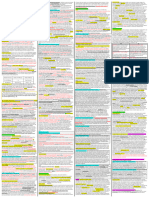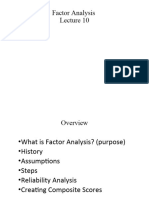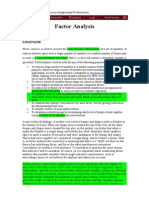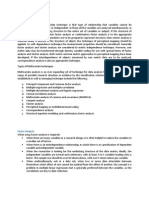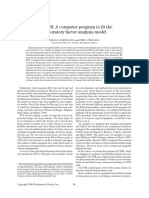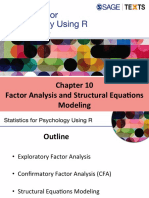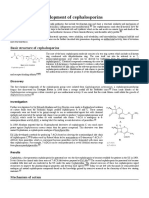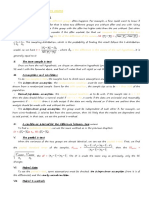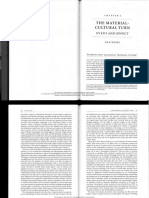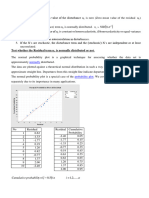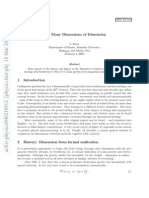0% found this document useful (0 votes)
176 views10 pagesExploratory Factor Analysis
Exploratory factor analysis (EFA) is a statistical technique used to uncover underlying relationships between measured variables when developing a scale. EFA assumes variables may associate with any factor and identifies common factors that influence multiple variables. Researchers must make decisions about the number of variables and factors to include and determine the optimal number of factors using procedures like eigenvalues, scree plots, or model comparison tests.
Uploaded by
olivia523Copyright
© © All Rights Reserved
We take content rights seriously. If you suspect this is your content, claim it here.
Available Formats
Download as PDF, TXT or read online on Scribd
0% found this document useful (0 votes)
176 views10 pagesExploratory Factor Analysis
Exploratory factor analysis (EFA) is a statistical technique used to uncover underlying relationships between measured variables when developing a scale. EFA assumes variables may associate with any factor and identifies common factors that influence multiple variables. Researchers must make decisions about the number of variables and factors to include and determine the optimal number of factors using procedures like eigenvalues, scree plots, or model comparison tests.
Uploaded by
olivia523Copyright
© © All Rights Reserved
We take content rights seriously. If you suspect this is your content, claim it here.
Available Formats
Download as PDF, TXT or read online on Scribd
/ 10








